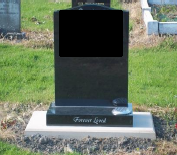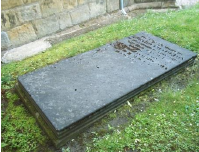LAWN MEMORIALS
This is a headstone and base set onto a foundation. The bottom joint has proved the downfall of the Lawn Memorial. It is also a joint prone to water penetration because the container and drainage holes pass through the joint, which is often at ground level.
LEDGER
This is a flat slab on the ground. It can have a curved, peon or flat top.
Headstone and Kerbset
The headstone and kerbs should be doweled or cramped together. Cover slabs fitting inside the kerbs sometimes rest on bricks and rely on the kerbs to keep it all together. Cover slabs on top of the kerbs may not have any means of keeping them in place or may not have any sort of central support. There may be chippings inside the grave space, but do not rely on the chip bed or the cover slab having any strength.
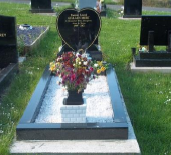
Headstone and Kerbset
This can be a ‘stand-alone’ unit, or on a full grave memorial. When on stepped bases, all levels should be doweled together. In older construction, the lower bases may not be doweled. A single tapered block is called a ‘die’.
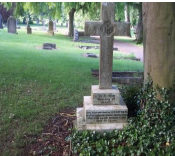
cross headstone
Table Memorials
This is a structure built with inscription panels on the sides, usually with a flat or shaped top.
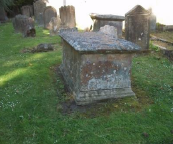
Table Memorials
Pinnacles/Obelisk
PINNACLE
This memorial is tapered to a point and has a small bottom joint for its height and is difficult to handle.
OBELISK
This usually sits central on the grave and consists of a base(s) with an inscription block. It is square on section, often tapered with a capping stone. On top of the cap is often an urn or cross. If the structure moves out of level then the capping stone is at risk of sliding off. These caps sometimes weigh a quarter of a ton or more.
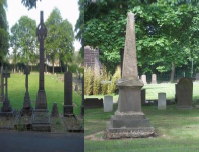
Pinnacles Obelisk

